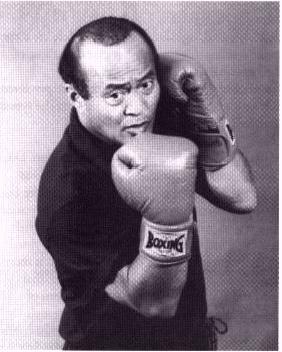 Learning what is useful in the martial arts is not contained within the four walls of a dojo. dojang, gwoon, studio or academy. Learning and absorbing usable knowledge is not located within the structure of your style or system, whether it is Chinese, Japanese, Korean, Brazilian, Thai, Indonesian, Okinawan, Burmese, Filipino, French or whatever. Learning comes from all your contacts, experiences and all facets of your life. The assimilation of learning is called knowledge and the proper use of knowledge is called wisdom.
Learning what is useful in the martial arts is not contained within the four walls of a dojo. dojang, gwoon, studio or academy. Learning and absorbing usable knowledge is not located within the structure of your style or system, whether it is Chinese, Japanese, Korean, Brazilian, Thai, Indonesian, Okinawan, Burmese, Filipino, French or whatever. Learning comes from all your contacts, experiences and all facets of your life. The assimilation of learning is called knowledge and the proper use of knowledge is called wisdom.
Knowledge in martial arts can come from fields outside the martial arts. Knowledge can come from your peers, your elders, your juniors, your teachers, your students and even from your mistakes.
Sometimes in a light conversation outside of a class room, you can become aware of a concept that a two-hour classroom lecture didn't reveal to you. Your friends in different martial arts such as Aikido, Jujitsu, Bando, Penjak Silat, Savate, street fighting, boxing or wrestling can help your growth if you empty your cup and taste their tea, rather than trying to convince them that your tea is better, and let it permeate your mind, body and soul. Both of your cups will be richer for the experience.
In the early 50's and 60's, most martial arts were prejudiced against other methods or were too proud to learn another style. It is a pity, because I feel you can learn from every contact you make. I believe you owe your allegiance to truth, knowledge and personal growth. Some people give their alliance to their style or to their instructor. I feel this is a noble gesture, as long as it doesn't restrict your quest for total knowledge. I believe you owe your allegiance to personal growth as well as to a particular style, system or person.
I personally encourage my students to study and to look into other systems and other instructors, as long as they are respectful to all parties concerned. No art, person, culture or thing is intrinsically better than any other. A Porsche is no better than a hollowed out canoe in the jungles of the Amazon. I try to bring instructors from many different styles into my Academy as guest instructors to help my students grow. No system has it all. Each system has something to offer and together, they yield a better, more well-rounded martial artist.
I think it is important for an instructor to remain a student at heart always-to constantly seek better ways of training and execution. It is important to be creative and to experiment and to seek help in areas where you lack expertise. Even a teacher with a doctor's degree in U.S. history needs to seek help when he needs information about Southeast Asia.
I consider myself very fortunate to have so many wonderiful guides to help me grow in this life. My father, my mother, my martial arts instructors, my schoolteachers and my many friends have all helped in my growth, self-improvement and development. The goal of martial arts is not for the destruction of an opponent, but to be used as a tool for self-growth and self perfection. The practice of a martial art should be a practice of love-the love for the preservation of life, the love for the preservation of your body the love for the preservation of your family and friends.
Free Voice - Issue 1 - Volume 2 - Spring 1997